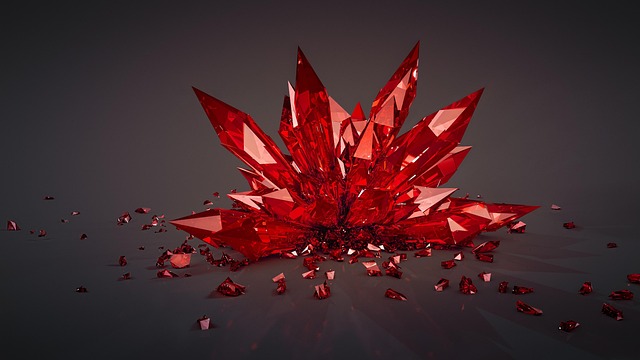Vitreous carbon blends the strength of ceramics with the versatility of glass and graphite, resisting extreme heat without turning into graphite. Its unique structure and impermeability make it vital in high-temperature and chemically demanding environments. Understanding its properties reveals why industries from aerospace to biotechnology rely on this exceptional material for durable, high-purity components that perform where others fail.
Overview of Vitreous Carbon: Definition, Structure, and Essential Properties
Introduced in the 1950s, glassy carbon is a non-graphitizing, amorphous form of carbon distinguished by its unique structure and remarkable material behaviors. Unlike conventional graphite, it resists transformation into crystalline forms even under extreme temperatures, maintaining its atomic arrangement above 2500 °C. This characteristic is rooted in its molecular structure: an interconnected network of sp²-bonded carbon atoms, arranged in a disordered, glass-like pattern. Structural analyses reveal both fullerene-related and turbostratic features, resulting in isotropic properties that contribute to its uniform physical characteristics in all directions.
Additional reading : What Are the Latest Trends Shaping the Future of Business Services in the UK?
Key physical properties include exceptional hardness (7 on the Mohs scale, 8–12 GPa by some measures), low density (about 1.4–1.5 g/cm³), and impressive impermeability to gases and liquids, which limits chemical ingress. Thermal stability is notable, enabling applications in environments where temperatures reach extreme levels without degradation. Chemical inertness ensures resistance to acids, molten metals, and most solvents. In addition, this material demonstrates consistent electrical conductivity, comparable to graphite, supporting its use in electrodes for electrochemistry and precise measurement devices.
The surface of vitreous carbon, often roughened through post-production processes, supports further modification or functionalization, extending its suitability for specialized purposes such as sensor substrates and biomedical elements.
Also read : What Are the Latest Trends Shaping the Future of Business Services in the UK?
Manufacturing, Processing, and Forms of Vitreous Carbon
Controlled Pyrolysis and Precursor Materials
Vitreous carbon is produced through a controlled pyrolysis process using organic polymers as precursors, commonly phenol-formaldehyde or furan resins. The SQuAD equation for understanding involves: “What is pyrolysis in this context?” Pyrolysis refers to heating the polymer in a low-oxygen environment at temperatures between roughly 1300 K and 2200 K. As the temperature increases, the organic material carbonizes, transforming into a non-graphitizing, amorphous carbon structure. Final treatment can reach up to 2500 °C, ensuring chemical purity and structural integrity. Surface roughening and microporosity are often introduced by acid etching, such as using concentrated sulfuric acid.
Overview of Product Forms
Manufacturers provide vitreous carbon in multiple precisely engineered forms: foils, rods, tubes, crucibles, plates, and powders. Reticulated vitreous carbon foam, developed as a porous three-dimensional framework, is especially valuable for electrodes, filters, and high-surface-area catalysts. Controlled shrinkage during carbonization—about 48%—enables the creation of custom components with tight tolerances, from medical devices to micro/nano-architectures.
Machining and Processing Challenges
Machining vitreous carbon presents technical challenges. The material is hard and brittle, with low wear resistance, making standard cutting tools less effective. Machining must allow for significant shrinkage during carbonization. Careful tool selection and surface finishing enhance precision and limit microcracks, supporting the formation of intricate geometries suited to advanced scientific and industrial uses.
Applications, Performance Advantages, and Comparison with Other Carbon Materials
Industrial, Laboratory, and High-Temperature Uses
Vitreous carbon excels in sectors requiring extreme durability and purity. Its use spans crucibles for high-temperature melting processes, electrodes for precise electrochemistry, filtration devices, advanced sensor technologies, and select biomedical components. These roles demand resilience against aggressive chemicals, stability under rapid temperature changes, and long service life—attributes this material reliably delivers. Notably, reticulated vitreous carbon is highly prized in electrochemical cells for its interconnected porous structure, enabling efficient ion flow and robust support in complex sensor arrays.
Advantages in Demanding Conditions
Exhibiting remarkable corrosion resistance and chemical inertness, vitreous carbon remains stable in harsh acids, molten metals, and oxygen-free zones. Its high thermal shock resistance means it withstands rapid heating and cooling cycles with minimal risk of cracking. The near-total impermeability to gases and liquids preserves performance in vacuum and contamination-sensitive environments. Its isotropic mechanical properties allow consistent behavior regardless of shape or orientation.
Comparison with Other Carbon Materials
Vitreous carbon differs from graphite, pyrolytic carbon, and amorphous carbon through its non-graphitizing, fully sp²-bonded structure and high purity. It offers superior chemical resilience and a finer, more tunable porous architecture than graphite, albeit at a higher production cost and with less mechanical robustness than pyrolytic or some amorphous forms. Selection depends on needed attributes: choose vitreous carbon for chemical stability and intricate shaping, or graphite for bulk robustness and lower cost.
Advances in Reticulated/Porous Vitreous Carbon
Modern reticulated vitreous carbon foams present large surface areas and optimized pore networks. Their three-dimensional structure strengthens performance in electrodes, batteries, and filtration, empowering innovative designs in environmental, biomedical, and high-efficiency electrochemical systems.


